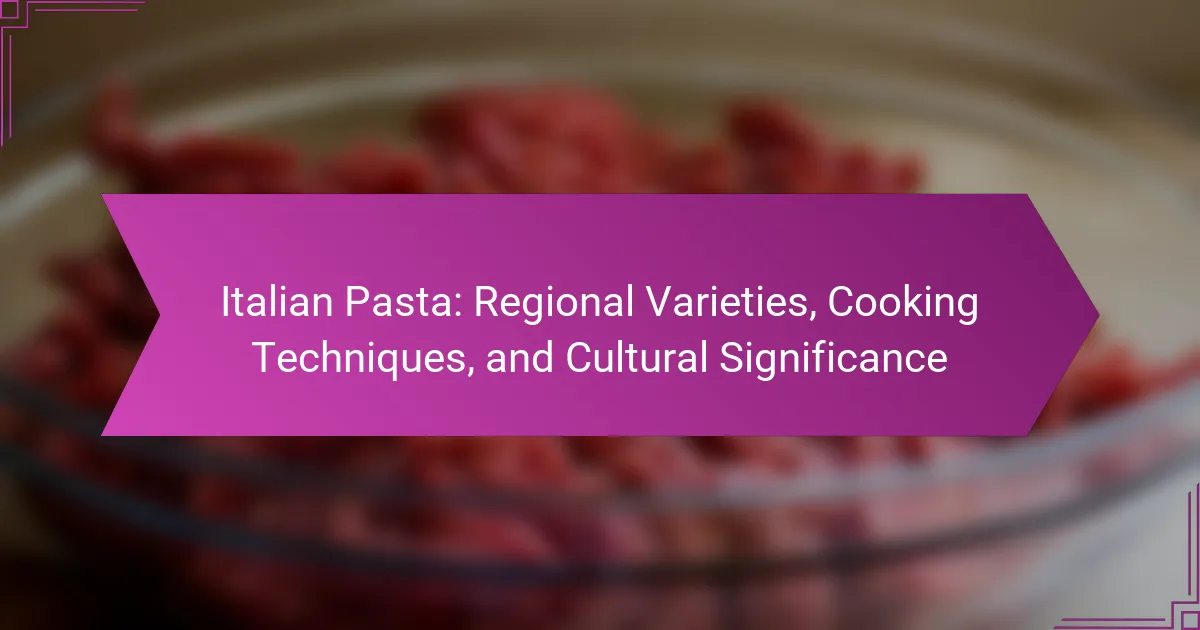French cheese offers a rich tapestry of flavors and textures, making it a culinary delight for many. Explore key types like Brie, Comté, and Roquefort, along with pairing suggestions for wines and foods. Delve into its historical background, showcasing the artisanal craft behind these regional treasures. Discover unique attributes that set each cheese apart, enhancing your appreciation and enjoyment.

What are the primary characteristics of French cheese?
French cheese is characterized by its diverse textures, flavors, and production methods. Key types include soft cheeses like Brie, hard cheeses such as Comté, and blue cheeses like Roquefort. Each type showcases unique attributes, including milk source, aging process, and regional influences. Pairing suggestions often highlight complementary wines, fruits, and breads, enhancing the tasting experience. The historical background reflects centuries of artisanal craft, making French cheese a cultural treasure.
How does the milk type influence cheese flavor and texture?
The type of milk used significantly influences cheese flavor and texture. Cow’s milk produces creamy, mild cheeses, while goat’s milk yields tangy, earthy varieties. Sheep’s milk often results in rich, nutty flavors. The fat content and protein structure in each milk type also affect the cheese’s final texture and mouthfeel. For example, high-fat milk creates softer cheeses, while lower-fat milk results in firmer textures.
What aging processes are common in French cheese production?
Common aging processes in French cheese production include maturation, affinage, and ripening. These processes enhance flavor, texture, and aroma, resulting in distinct cheese profiles. Maturation typically lasts from a few weeks to several years, depending on the cheese type. Affinage involves careful monitoring and specific conditions, such as humidity and temperature, to develop desired characteristics. Ripening can introduce unique attributes like mold or bacteria, contributing to the cheese’s overall complexity.
Which regions are renowned for specific cheese varieties?
Regions renowned for specific cheese varieties include France, Italy, and Switzerland. France is famous for varieties like Camembert and Roquefort, while Italy is known for Parmigiano-Reggiano and Mozzarella. Switzerland produces Gruyère and Emmental. Each region’s unique climate and traditions shape these cheeses, contributing to their distinct flavors and textures.

What are the most popular types of French cheese?
The most popular types of French cheese include Brie, Camembert, Roquefort, Comté, and Cheddar. Each type offers distinct flavors and textures, making them favorites among cheese lovers.
Brie is known for its creamy texture and mild flavor, often enjoyed with bread. Camembert is similar but has a stronger aroma and taste. Roquefort, a blue cheese, features a sharp, tangy profile and is made from sheep’s milk. Comté is a hard cheese with nutty notes, ideal for pairing with fruits. Cheddar, although originally from England, has gained popularity in France for its versatility and rich flavor.
Which soft cheeses are iconic in French cuisine?
Iconic soft cheeses in French cuisine include Brie, Camembert, and Neufchâtel. These cheeses are celebrated for their creamy textures and rich flavors, making them staples in both traditional and modern French dishes. Brie, originating from the Île-de-France region, is known for its buttery taste and soft rind. Camembert, hailing from Normandy, offers a stronger flavor profile with earthy notes. Neufchâtel, often shaped into heart forms, presents a slightly crumbly texture and a milder taste. Together, these cheeses exemplify the artistry of French cheesemaking and are often paired with fruits, bread, or wine to enhance their unique characteristics.
What distinguishes hard cheeses from soft varieties?
Hard cheeses differ from soft varieties primarily in moisture content and aging process. Hard cheeses, like Parmesan, have lower moisture and undergo longer aging, resulting in firmer textures and intense flavors. In contrast, soft cheeses, such as Brie, retain higher moisture, leading to creamy textures and milder tastes. This distinction affects their culinary uses and pairing options, with hard cheeses often complementing robust wines and soft varieties pairing well with fruits and lighter wines.
How do blue cheeses differ from other types?
Blue cheeses differ from other types primarily through their distinct mold cultures, which impart unique flavors and textures. Unlike most cheeses, blue cheeses contain Penicillium mold, creating blue or green veins and a tangy taste. This mold also contributes to their creaminess and pungent aroma, setting them apart from firmer, milder cheeses like cheddar or gouda. Additionally, blue cheeses typically have a higher moisture content, enhancing their richness. Their aging process varies, with some blue cheeses aged for several months, allowing for deeper flavor development.

How can French cheese be paired with food and beverages?
French cheese pairs excellently with various foods and beverages, enhancing flavors and experiences. Soft cheeses like Brie complement fruits and nuts, while hard cheeses such as Comté pair well with cured meats and crusty bread.
For beverages, light wines like Sauvignon Blanc suit fresh goat cheese, while robust reds like Cabernet Sauvignon enhance aged cheeses. Pairing with craft beers can also yield delightful contrasts, such as pairing creamy cheeses with hoppy IPAs.
Experimenting with these combinations can reveal unique tastes, making cheese a versatile component in culinary experiences.
What are the best wine pairings for different cheese types?
The best wine pairings for different French cheese types enhance flavors and create balance. For soft cheeses like Brie, a Chardonnay complements its creaminess. A robust red like Cabernet Sauvignon pairs well with aged cheeses such as Comté. Pairing Roquefort with a sweet Sauternes balances its sharpness. For goat cheese, a Sauvignon Blanc accentuates its tangy notes. Finally, a light Pinot Noir goes well with Gruyère, highlighting its nutty flavor.
How can cheese enhance the flavors of specific dishes?
Cheese can significantly enhance the flavors of dishes by adding richness, depth, and complexity. French cheeses, such as Brie and Roquefort, complement specific foods beautifully.
Brie pairs well with fruits like apples and pears, providing a creamy contrast. Roquefort’s sharpness enhances the flavor of steak or enhances salads with nuts and fruits. Comté, with its nutty profile, works well in gratins or melted over vegetables.
The historical background of French cheese reveals its evolution alongside regional cuisines, influencing flavor pairings. For instance, the tradition of using cheese in French cooking dates back centuries, with each region developing unique varieties that enhance local dishes.
In summary, the right French cheese can elevate a dish’s overall taste, making it more enjoyable and memorable.
Which fruits and nuts complement French cheese?
Fruits and nuts that complement French cheese include figs, pears, walnuts, and almonds. These pairings enhance the cheese’s flavors and textures. Figs provide sweetness, while pears add freshness. Walnuts and almonds contribute crunch and richness, creating a balanced tasting experience.

What is the historical significance of French cheese?
French cheese has historical significance as a symbol of regional identity, culinary tradition, and agricultural practices. Its development reflects France’s diverse geography and cultural influences. Over centuries, cheese-making techniques evolved, leading to unique varieties like Camembert and Roquefort. These cheeses contributed to France’s global reputation in gastronomy. The establishment of AOC (Appellation d’Origine Contrôlée) regulations in the 20th century further solidified the cultural importance of French cheese, ensuring quality and preserving traditional methods. This heritage continues to influence modern cheese production and consumption worldwide.
How has cheese-making evolved in France over the centuries?
Cheese-making in France has evolved significantly, reflecting regional traditions and technological advancements. Historical records indicate that cheese production began as early as the Roman era, with local varieties emerging over centuries.
In the Middle Ages, monasteries became centers of cheese-making, preserving techniques and developing unique flavors. The introduction of pasteurization in the 19th century revolutionized production, improving safety and shelf life.
Today, France boasts over 1,600 distinct cheeses, showcasing diverse milk sources and aging processes. This evolution highlights the blend of tradition and innovation that characterizes French cheese-making.
What role did cheese play in French culture and society?
Cheese plays a significant role in French culture and society as a symbol of regional identity and culinary tradition. France boasts over 1,000 distinct cheese varieties, each reflecting local terroir and craftsmanship. Cheese is integral to social gatherings, often served with wine during meals, enhancing communal experiences. Historically, cheese production has been linked to agricultural practices, influencing rural economies and lifestyles. The unique attributes of French cheese, such as the diverse aging processes and milk sources, further underscore its cultural importance.
Which historical events influenced the development of regional cheeses?
Historical events such as the French Revolution and the establishment of regional trade routes significantly influenced the development of French cheeses. The Revolution fostered a sense of regional identity, leading to the preservation of local cheese-making traditions. Additionally, the expansion of trade routes allowed for varied milk sources and techniques, enhancing diversity in cheese types. Events like the introduction of pasteurization further shaped production methods and safety standards, impacting cheese quality and availability.

What unique attributes set certain French cheeses apart?
Unique attributes that set certain French cheeses apart include their distinct flavors, textures, and production methods. For example, Roquefort is known for its blue veins and tangy taste, while Brie features a creamy texture and mild flavor. Each cheese often reflects its specific region, influenced by local milk sources and aging processes. Additionally, some cheeses, like Comté, have unique aging requirements that enhance their flavor profiles.
Which cheeses are protected by AOC status and what does it mean?
AOC status protects specific French cheeses, ensuring quality and geographical authenticity. Notable examples include Roquefort, Brie de Meaux, and Comté. AOC certification guarantees adherence to traditional production methods and regional standards. This designation enhances the cheese’s reputation and market value.
How do artisanal methods contribute to cheese uniqueness?
Artisanal methods significantly enhance cheese uniqueness through traditional techniques and local ingredients. These methods emphasize craftsmanship, resulting in distinctive flavors and textures. For instance, small-scale producers often use raw milk, which contributes to complex taste profiles. Additionally, the influence of regional terroir means that the same cheese type can vary greatly depending on its location. This combination of factors creates a rich diversity in French cheeses, making each artisanal product unique.
What rare cheese varieties are worth exploring?
Exploring rare cheese varieties can enhance your culinary experience. Consider these unique French cheeses:
1. **Époisses** | A pungent cow’s milk cheese with a creamy texture, known for its strong aroma.
2. **Livarot** | This semi-soft cheese features a distinctive orange rind and a rich, spicy flavor profile.
3. **Tomme de Savoie** | A rustic cheese with earthy notes, often made from raw cow’s milk.
4. **Bleu de Gex** | A rare blue cheese with a creamy texture and a slightly tangy taste, produced in the Jura region.
5. **Salers** | A hard cheese made from unpasteurized cow’s milk, known for its nutty flavor and unique aging process.
6. **Valdeon** | A Spanish blue cheese often associated with French varieties, featuring a rich, complex taste.
These cheeses showcase the diversity and depth of French cheese-making traditions.

What are the best practices for storing and serving French cheese?
To store and serve French cheese effectively, maintain a cool, consistent temperature and use appropriate containers. Wrap cheeses in wax paper or cheese paper to allow them to breathe while preventing moisture loss. For soft cheeses, store them in airtight containers to preserve their texture and flavor. Serve cheeses at room temperature to enhance their taste, typically allowing them to sit out for about 30 minutes before serving. Avoid storing cheeses near strong odors, as they can absorb these scents, altering their flavor profile.
How should different types of cheese be stored for optimal freshness?
Different types of cheese should be stored according to their specific needs to maintain optimal freshness. Soft cheeses like Brie and Camembert should be kept in their original packaging or wrapped in wax paper to allow them to breathe. Hard cheeses such as Cheddar and Parmesan benefit from being wrapped in parchment paper and then placed in an airtight container to prevent drying out. Blue cheeses require refrigeration in a breathable container to manage moisture and prevent mold growth. Fresh cheeses like Ricotta should be stored in their original liquid or in a sealed container to maintain moisture.
Proper storage temperatures range from 34°F to 38°F for most cheeses. Avoid storing cheese near strong-smelling foods, as cheese can absorb odors. Regularly check for mold or spoilage, especially in softer varieties.
What serving techniques enhance the cheese tasting experience?
Serving techniques that enhance the cheese tasting experience include selecting the right temperature, using appropriate utensils, and pairing with complementary foods. Serve cheese at room temperature to maximize flavor. Use cheese knives for different textures to avoid cross-contamination. Pair with fruits, nuts, or wines that enhance the cheese’s unique attributes.
Which common mistakes should be avoided when enjoying French cheese?
To enjoy French cheese fully, avoid common mistakes such as pairing it with the wrong wine, serving it too cold, or overlooking regional varieties. Pairing cheese with complementary flavors enhances the experience. Serve at room temperature to appreciate the full range of flavors. Explore diverse regional cheeses to discover unique tastes.



